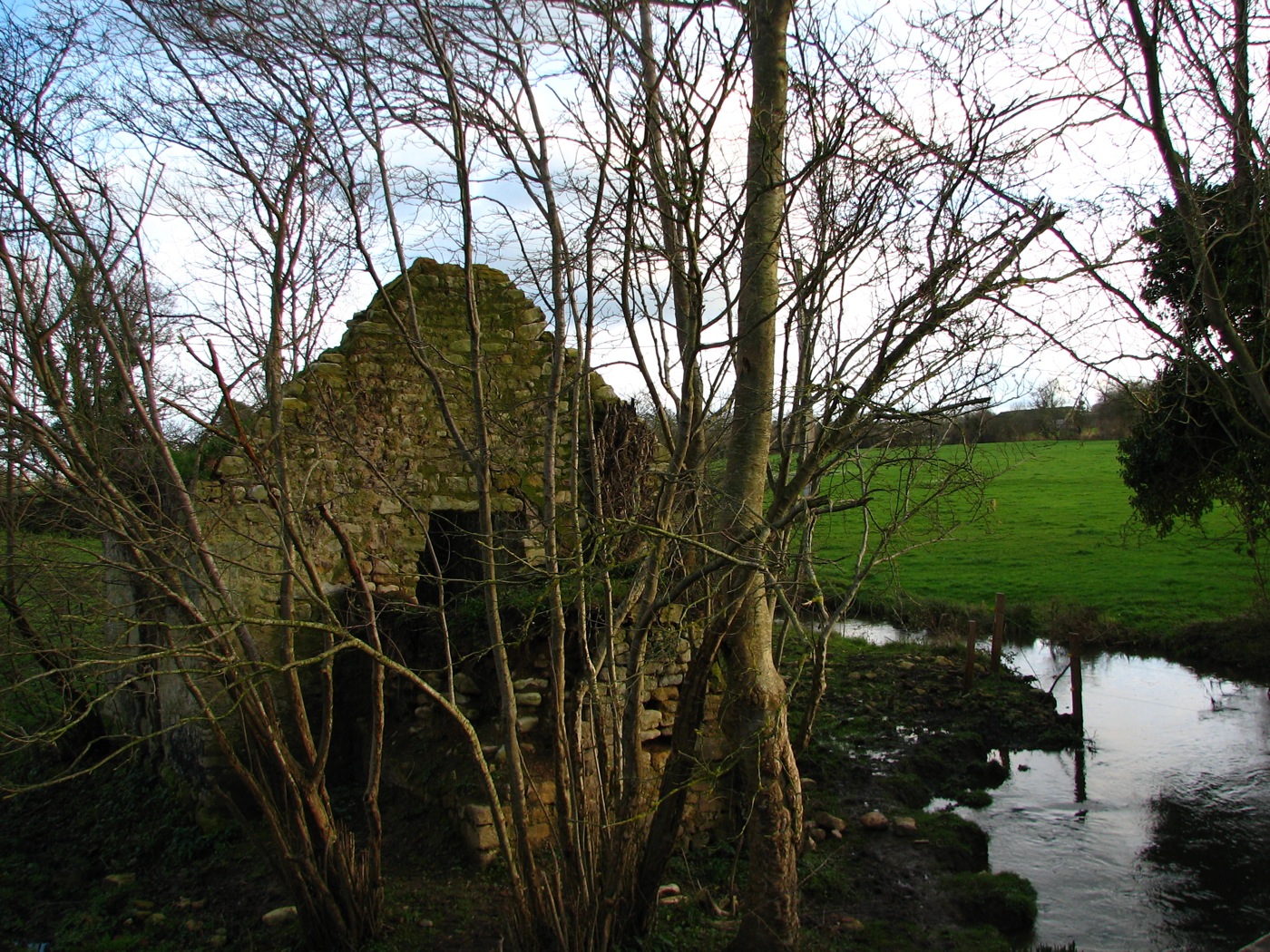Several years ago, I began interviewing officers who had served in World War II for my book West Point ’41: The Class That Went to War and Shaped America. These West Point officers were among the last class to graduate the military academy before the U.S. entered WWII, and they were quickly catapulted into high commands in combat. I immediately realized that I was in a race against time to record their stories. The officers, many of whom went on to become generals, were all in their nineties. But their stories had to be told and they would be among our last chances to hear history in the words of the men who made it. They were with the soldiers who jumped into D-Day, battled in the Bulge, and forged the islands of the Pacific for victory in World War II. It was the Normandy invasion, however, that turned the tide in favor of the Allies and marked the beginning of the end of the war. Here is my virtual tour of the sacred grounds in that region as we revisit Normandy to commemorate the 70th anniversary of D-Day.
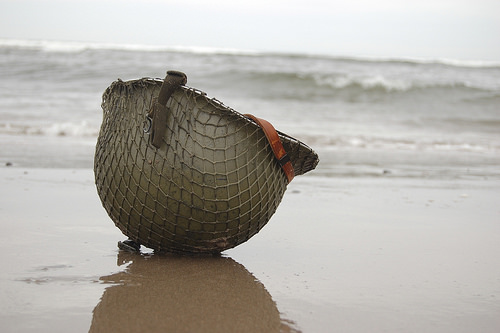
The Longest Day
Normandy, about 75 miles northwest of Paris, is scattered with WWII museums and memorials in tribute to the largest military operation in history. The offensive began on June 6, 1944 when 160,000 American, British, and Canadian Allied forces stormed area beaches in the D-Day invasion. Hundreds of thousands more troops followed in subsequent waves. Back then, the waters along Omaha and Utah Beaches were fiery red from those lost to the invasion. Quiet farm lanes became “hedgerow hell” with thousands of oddly shaped lots surrounded by 30-foot hedges making it impossible to predict where snipers lurked. And the church spire at St. Mère-Église snagged the shoot of a paratrooper from the U.S. 82nd Airborne Division, and there he hung, pretending to be dead rather than become firing practice for the Germans (he survived the war and was profiled in the movie The Longest Day).
Now this same locale tells a story of contrasts. The waves washing ashore mostly speak of tranquility; apple trees bloom undisturbed along quiet farm lanes; church bells ring for services. As one tours the area’s sights, it’s hard not to reflect on that other time and place. Pointe du Hoc offers one of the most dramatic vistas from which to imagine then. This dramatic cliff, part of the Atlantic Wall, was deemed impenetrable by U.S. intelligence, who insisted, “Three old women with brooms could stop the Rangers scaling that cliff!” The cliff was heavily fortified by German artillery but Army Rangers nonetheless scaled it. It is now a heritage site, free for visitors to wander among the crater-pocked landscape that still bears the signs of battle. Nearby is a small museum that tells the story behind the capture of the 100 foot cliff.
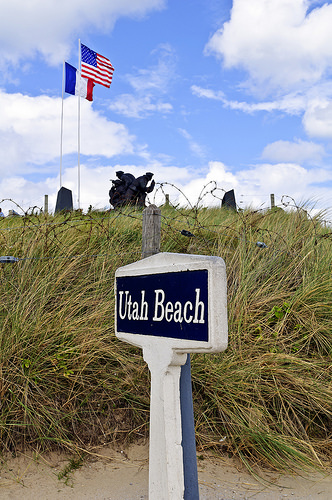
Eternal Views
Down the road to the east overlooking Omaha Beach is one of the most moving of the historical sites, the Normandy American Cemetery and Memorial. It’s here that more than 9,000 soldiers are buried — including 38 pairs of brothers, fathers beside sons and four women. Their crosses and Stars of David are spectacularly aligned as part of a stunning, 170 acre tribute to commemorate the dead. The cemetery was originally the vision of General Walter Woolwine, West Point ‘41’, a young lieutenant colonel at the time, who returned to Normandy right after the war, tasked with Eisenhower’s orders to sort out graves spread all over the region. General Woolwine, now 96 yrs. old, told me that he chose the site because it was symbolic. It’s where the first American cemetery was established on European soil two days after D-Day and it looks out over a sea that’s endless — a fitting view for those that rest there.
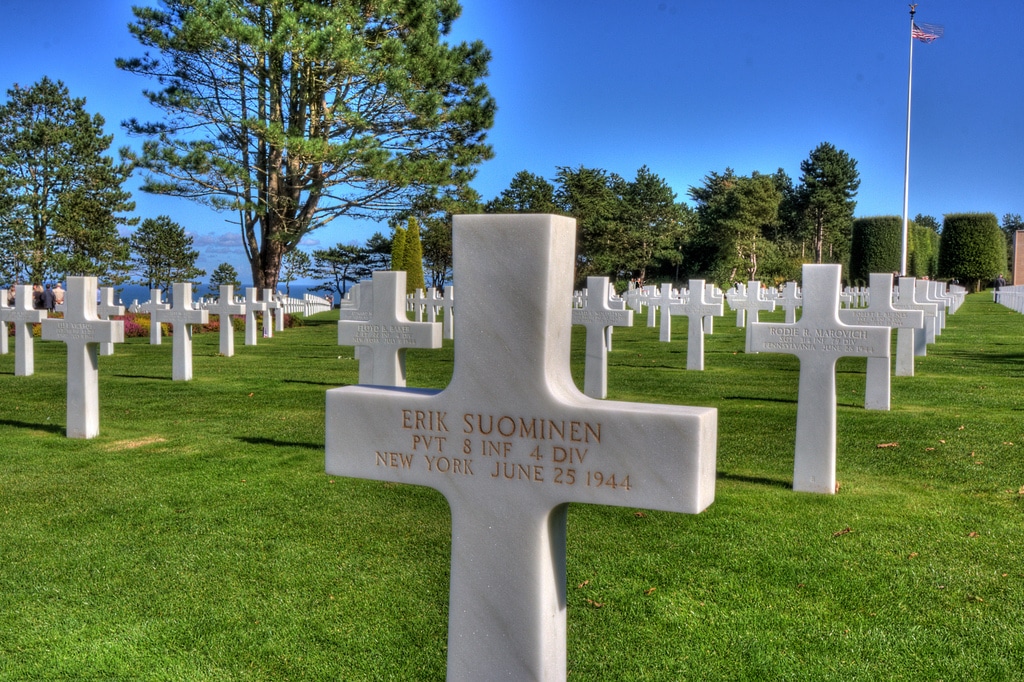
Along the coast the view is broken only by Mulberry Harbor in the surf, its remnants devastated by English Channel storms. The remains can only be accessed off the popular seaside town of Arromanches, to the east of the cemetery. To the west and inland a bit is the town of St. Mère-Église, critical to the invasion since it was a key crossroads. American paratroopers jumped in to surround the town in the pre-dawn hours of June 6, 1944, Major Jack Norton among them. Norton later spoke of the howling winds that caused many paratroopers to miss their drop zones, he, himself, getting knocked unconscious jumping from his C-47. He came to on the ground minus his pistol and ammunition, which had pierced through his holster and pockets on the way down. His son recently said to me of his father and parachute infantry colleagues, “None of the men expected to live through the night … but they hoped that liberty might be preserved.” Jack Norton survived and went on to become a three-star general.
St. Mère-Église was the first town liberated in France, and a dummy still hangs from the town’s church spire to commemorate the paratrooper who got snagged on it. These and other sites of historic significance abound in the region. Of interest for techies is a radar history museum in Douvres-la-Délivrande, along the coast, featuring the groundbreaking system relied upon by ace Luftwaffe fighter pilots. In central Normandy, inland, is “hedgerow hell” in the vicinity of St. Lo where I spent many hours in conversation with Colonel James Forsyth, who was captured there by the SS. Even tanks, he said, had trouble penetrating the area’s dense hedges, making the Allied advance more befitting hedgehogs than an armored Army. Today instead of worrying about snipers hiding in the thickets, visitors can take pleasure in walking or hiking along the endless array of pretty, shaded lanes.
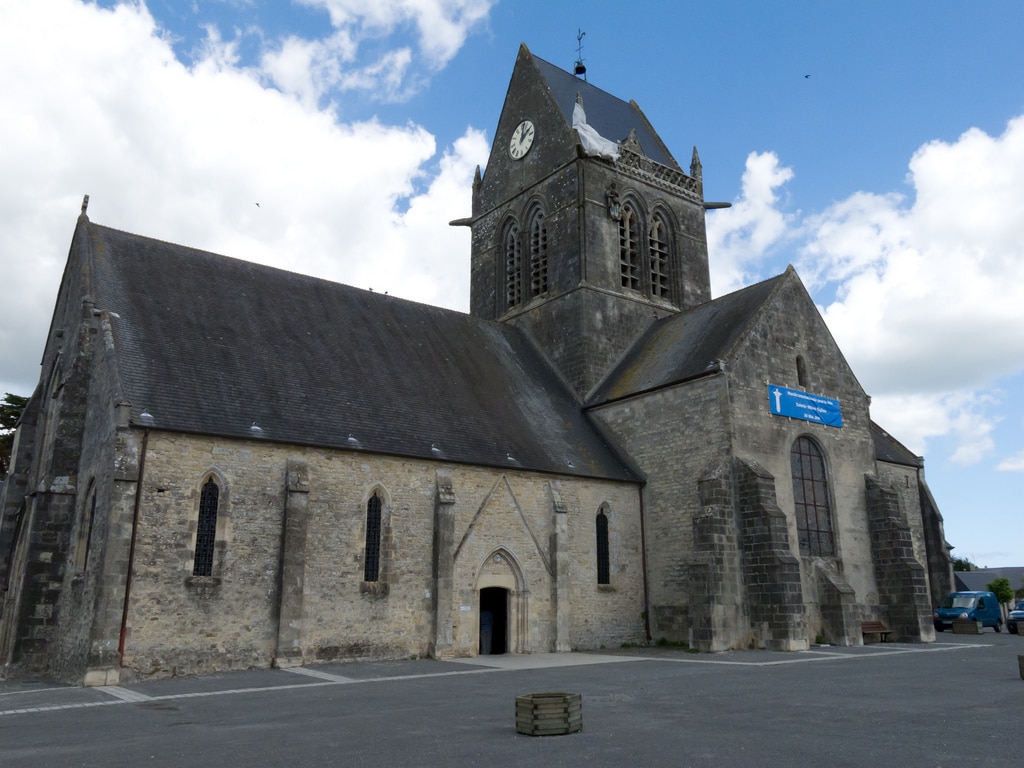
For coastal escapes, in addition to Arromanches, Deauville is a popular seaside resort which for decades inspired writers who strolled along its stretches of boardwalk. Not far from there is Honfleur, a romantic harbor town favored by Parisians for weekend getaways.
Culinary Liberation
Deciding exactly what to do may be challenging but in Normandy one thing is certain – it’s easy to enjoy the “taste” of liberation. While soldiers suffered under k-rations and sometimes drank out of helmets during the war, culinary delights now await those visiting this part of France. Crepe culture presides, Calvados (apple brandy) complements it perfectly, and oysters are farmed by the armful; there is the “deep sea” variety from the Cotentin Peninsula (Utah Beach region), cupped mollusks from nearby Brittany, and flavorful flat oysters from lower Normandy that thrive with the strong tidal movement. Locals can be seen scaling rocks in search of tasty mussels for the classic Moules Marinières or a contemporary Mouclade-style dish with a touch of saffron or curry. Look also to feast on almond coated trout à la Normande — perhaps flambéed with Calvados — or “hedgehog” mushrooms, combined with duckling and scallops in Rouen specialties and smothered with butter and cream.
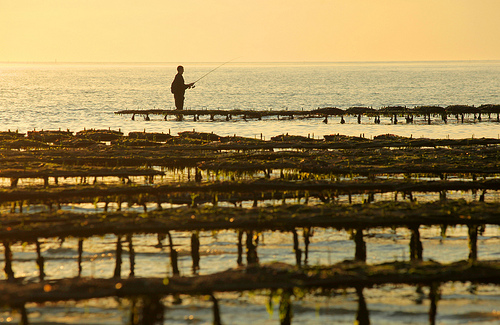
Normandy: Remember Then. Bask in the Now
Hedges notwithstanding, 70 years ago the Allied troops in Normandy moved faster than the local Camembert could age. Now, visitors rambling across the region can advance at their leisure while taking in a plethora of sights in one of the most important theaters of world war history. Normandy was a stage in 1944, and it remains one today in 2014. Touring the region is full of cherished moments that will remain with you a lifetime. You’ll reflect on and remember then, and at the same time bask in the now — made possible by a few hundred thousand brave men who stormed those shores 70 years ago. On the 70th anniversary of the D-Day invasion, thank you to each and every soldier that fought in Normandy for freedom.
70th Anniversary info: www.the70th-normandy.com
[alert type=white]
Top World War II Sights:
Normandy American Cemetery and Memorial — A stunning tribute above Omaha Beach with 10,000 crosses and Stars of David spectacularly aligned to commemorate those lost in the Normandy invasion. Omaha Beach, 14710 Colleville-sur-Mer, France; Tel. +33.2.31.51.62.00; www.abmc.gov.
Mulberry Harbor —Remnants of the artificial harbor created for the D-Day invasion are scattered along the shores of Arromanches. Place du 6 Juin, 14117 Arromanches; Tel. +33.02.31.22.34.31; www.arromanches-museum.com
Pointe du Hoc — Enjoy vistas from this dramatic cliff deemed impenetrable by U.S. intelligence but scaled by U.S. Army Rangers. www.isigny-grandcamp-intercom.fr
Ste.-Mere-Eglise — Visit this charming town for a taste of liberation. It was the first French town captured by the Allies, and a dummy still hangs from the church spire to commemorate an 82nd Airborne paratrooper who got snagged on it in the invasion. www.sainte-mere-eglise.info/en/
About the Author:
Anne Kazel-Wilcox recounts D-Day stories in West Point 41: The Class That Went to War and Shaped America, published in June 2014 by University Press of New England.
Available from the publisher: www.amazon.com/West-Point-41-Shaped-America/dp/1611684692
[/alert]

